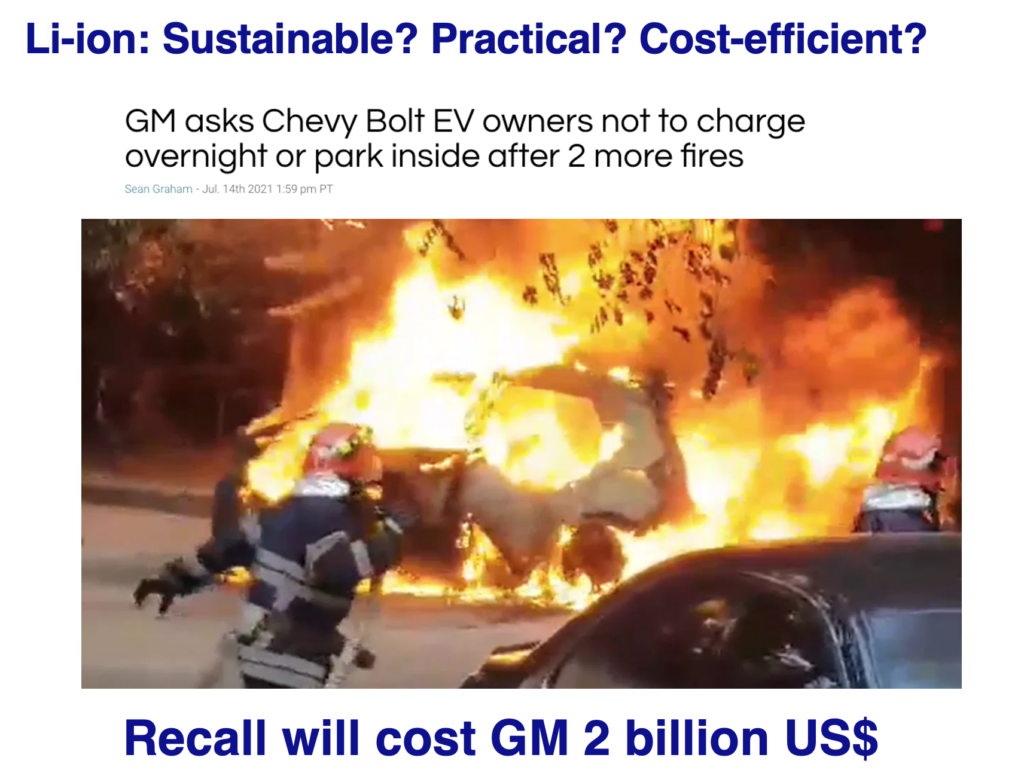From a new IDTechEx article: EV Fires: A Disaster for Automakers, But an Opportunity for Material Suppliers
“The key issue is that EV fires tend to be much more severe and attract a lot more press. A Hyundai Kona fire in 2020 blew the roof off the garage in which it was stored. Equally scary is the scenario in which these fires occur; whilst a fire might be expected after a crash or damage to the battery, a large proportion of EV battery fires occur when the vehicle is parked, not driving or charging, and with no obvious trigger. Research from IDTechEx shows that approximately a third of EV fires occurred in this situation.”
The quest for the ideal battery is a hard one. Much vaporware in the announcements. The issue is that it has to meet many properties right. Cycle life is important for real (ecological) sustainability. Power, energy density, operating temperatures, DoD are important for practical use.
Safety however is the most important and the killer for NMC. The recent report of IDTechEx makes that clear. If the cause cannot be known in many cases, then how can one expect that safety measures can be implemented?
One can of course implement all kinds of measures to reduce the risk. But when “there is no obvious trigger”, this is a clear sign that the residual risk is too high. Nobody would board a plane under such circumstances. As I noted elsewhere, the problem needs to be tackled in a more fundamental way, at the technological level. Solid-state is such an approach, but does it deliver the power density and cycle life? The core of the problem is the redox reaction. Hence an electrostatic storing of the electrons is much safer. Our hybrid powercapacitors deliver power, energy, safety, and a long lifetime. www.kurt.energy


Recent Comments